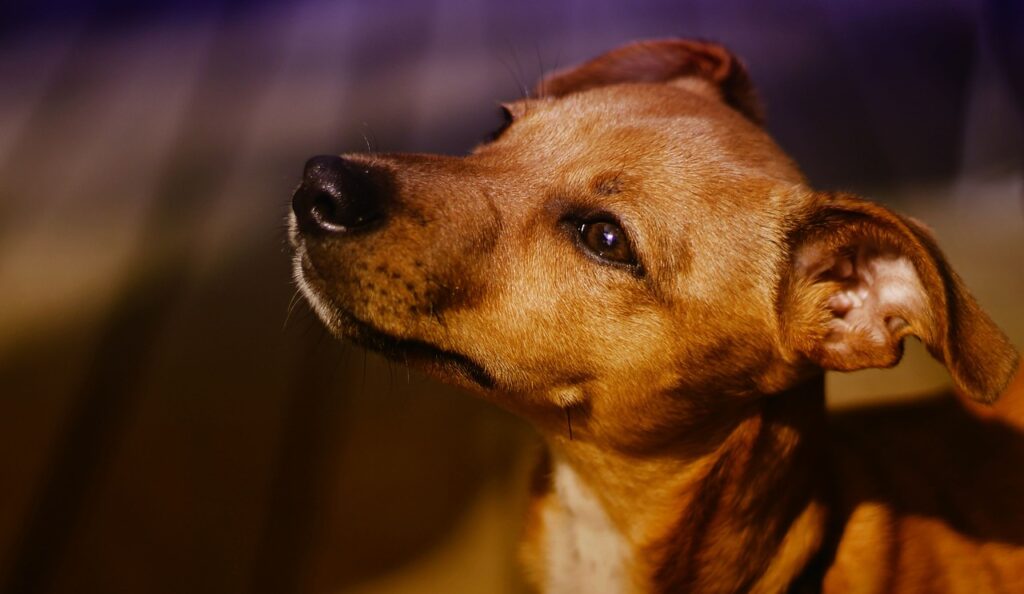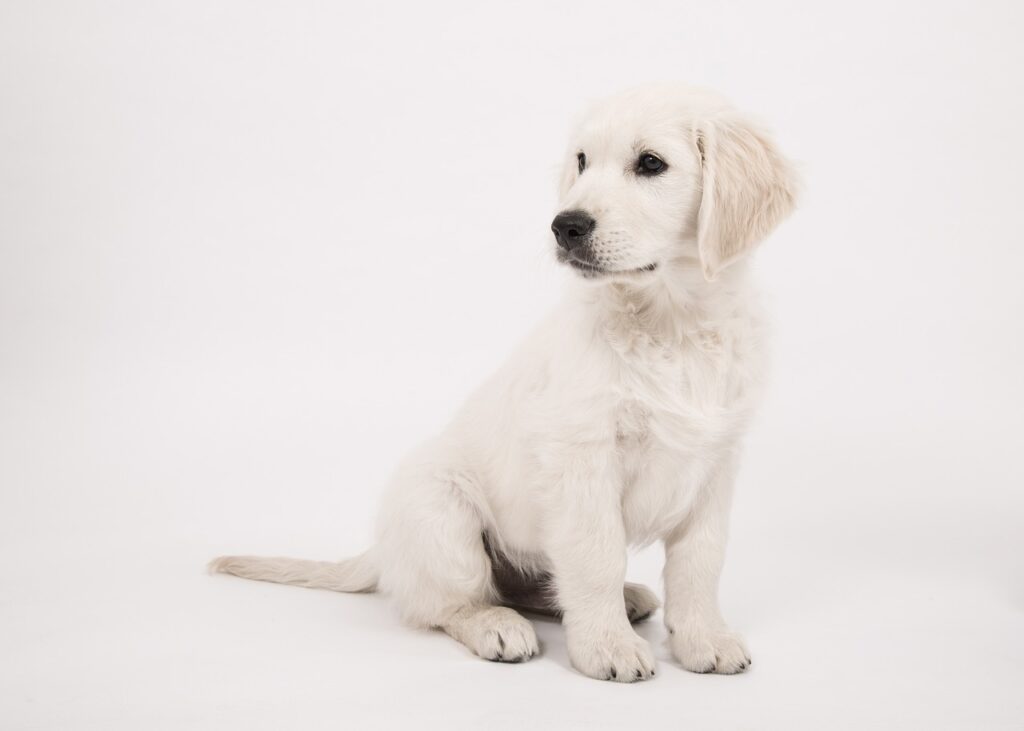
So, you’ve got a furry friend and some little ones in your life – how exciting! But now comes the big question: how do you introduce your dog to children? Well, fear not, because we’ve got some tips and tricks to help make this introduction go as smoothly as possible. From taking it slow to setting boundaries, we’ll guide you through the process so that everyone, both your pup and the kids, can form a bond that will last a lifetime. Get ready for some tail-wagging fun!

Understanding the Importance of Proper Dog-Child Introductions
Why is it important to introduce a dog to children?
Introducing a dog to children is crucial for the well-being and safety of both parties involved. Dogs are often a beloved family pet, and it is essential to establish a positive and safe relationship between them and children. Proper introductions can create a strong bond, foster mutual respect, and prevent potential risks or conflicts from arising in the future. It is an opportunity to teach children about responsibility, empathy, and understanding dog behavior.
The potential risks of improper introductions
Improper introductions can lead to several risks, including accidents, fear, and anxiety for either the dog or the children. A dog who feels threatened or overwhelmed may display defensive behaviors, such as growling or biting, which can result in injuries to children. On the other hand, children who do not understand dog behavior may unintentionally provoke aggressive reactions or cross boundaries, resulting in harm to themselves or the dog. By not preparing both the dog and children adequately, the potential risks and negative consequences increase significantly.
Building a positive and safe relationship between dogs and children
Building a positive and safe relationship between dogs and children is essential for fostering a harmonious household and ensuring the well-being of all family members. By providing the necessary preparations, education, and supervision, it is possible to create an environment where both dogs and children can coexist happily and safely. Effective introductions lay the foundation for a lasting bond, teaching children important life skills, and allowing the dog to be an active and loved member of the family.
Preparing Your Dog for the Introduction
Assessing your dog’s temperament and behavior
Before introducing your dog to children, it is crucial to assess your dog’s temperament and behavior. Some dogs may be naturally more tolerant and patient, while others may have a lower tolerance for potentially overwhelming situations. Understanding your dog’s temperament will help you determine the appropriate strategies for introduction and ensure the safety of all involved. If you have concerns about your dog’s behavior or temperament, it is advisable to consult with a professional trainer or behaviorist for guidance.
Ensuring your dog is well-trained and responsive to commands
Well-trained dogs are more likely to respond appropriately to children’s presence and commands, reducing the likelihood of conflicts or accidents. Ensure that your dog is familiar with basic obedience commands such as sit, stay, and come. Practice these commands in various situations and environments to ensure your dog’s responsiveness, even when distractions are present. A well-trained dog will be easier to manage during introductions and interactions with children.
Gradually socializing your dog with different environments and experiences
Socializing your dog with various environments and experiences can help prepare them for interactions with children. Expose your dog to different sights, sounds, smells, and environments gradually. This can include walks in the park, visits to pet-friendly stores, or playdates with other well-behaved dogs. By gradually exposing your dog to new experiences, you can minimize the chances of fear or anxiety reactions and promote confidence in unfamiliar situations.
Introducing your dog to new sights, sounds, and smells
To further prepare your dog for the introduction to children, it is helpful to expose them to new sights, sounds, and smells that are commonly associated with children. This can include playing recordings of children’s laughter, exposing them to toys or objects commonly used by children, and allowing them to observe children from a distance. These gradual introductions can help familiarize your dog with the unique characteristics of children and reduce any potential fear or hesitation they may have.
Preparing Children for the Introduction
Educating children about dog behavior and body language
Educating children about dog behavior and body language is crucial before any introduction takes place. Teach them how to recognize signs of fear, stress, or discomfort in dogs, such as growling, showing teeth, or attempting to move away. Explain that dogs use body language to communicate and that it is important to be mindful of these signals to ensure safe interactions. By understanding and respecting dog behavior, children can avoid actions that may provoke fear or aggression in dogs.
Teaching children how to approach dogs safely
Properly teaching children how to approach dogs safely is key to preventing accidents or conflicts during introductions. Instruct children to ask for permission from both the dog’s owner and the dog itself before approaching. Teach them to approach slowly, avoiding sudden movements or loud noises that may startle the dog. Emphasize the importance of allowing the dog to sniff their closed hand, as this is a non-threatening way for the dog to gather information about the child. By teaching children these safe approaches, you empower them to have positive interactions with dogs.
Promoting respect and empathy towards animals
Promoting respect and empathy towards animals is an essential part of introducing children to dogs. Teach children that dogs have feelings too and that they should be treated with kindness and consideration. Encourage them to be gentle and avoid rough play, as this can be uncomfortable or overwhelming for dogs. Empathy towards animals helps children understand the importance of providing a safe and nurturing environment for dogs and reinforces the value of responsible pet ownership.
Setting boundaries and rules for interaction
Establishing clear boundaries and rules for interactions between children and dogs is essential for everyone’s safety and well-being. Teach children not to approach or touch a dog while they are sleeping, eating, or playing with toys. Instruct them to avoid pulling the dog’s tail, ears, or fur, as this can cause discomfort or pain. Emphasize the importance of respecting the dog’s personal space and allowing them to initiate contact. By setting these boundaries, children can learn how to interact with dogs in a respectful and responsible manner.
Choosing the Right Environment for the Introduction
Finding a quiet and comfortable space
When introducing a dog to children, it is crucial to choose a quiet and comfortable space for the initial interaction. A calm environment helps reduce stress and anxiety for both the dog and the children and allows them to focus on the introduction without unnecessary distractions. This can be a familiar room in your home or a calm outdoor setting where both parties feel at ease.
Avoiding overcrowded or overwhelming areas
Avoiding overcrowded or overwhelming areas is crucial during dog-child introductions. Large crowds or excessive noise can be unsettling for dogs, potentially triggering fear or anxiety. Choose a location where the number of people present is limited, ensuring a more controlled and relaxed atmosphere. This allows the dog and children to have a positive and stress-free experience during the introduction.
Removing any potential hazards or distractions
Creating a safe environment is of utmost importance when introducing a dog to children. Remove any potential hazards or distractions that may pose a risk to either party. Ensure that sharp or fragile objects are out of reach and that any choking hazards, such as small toys, are removed from the area. By removing potential risks, you create a secure space that fosters a positive and comfortable introduction.
Providing a controlled environment
Providing a controlled environment during the introduction is crucial for managing the interaction and ensuring everyone’s safety. Keep the introduction space confined, such as using baby gates or a leash for the dog, to prevent any sudden or unexpected movements. By controlling the environment, you can gradually introduce the dog and children, closely observe their interactions, and intervene if necessary.

Supervising the Initial Interaction
Always supervising the interaction between the dog and children
Supervision is essential during the initial interaction between the dog and children. Regardless of how well-prepared both parties are, accidents or misunderstandings can still occur. Always have a responsible adult present to closely monitor their interactions, ensuring that both the dog and children are comfortable and exhibiting appropriate behavior. This supervision allows for immediate intervention if any signs of stress or discomfort arise.
Encouraging calm and gentle behavior from both parties
Encouraging calm and gentle behavior from both the dog and children sets the tone for a positive introduction. Remind children to speak in soft voices and avoid sudden movements or loud noises. Encourage them to interact with the dog gently, using slow and controlled petting motions. Similarly, reinforce positive behavior in the dog, praising and rewarding them for calm and gentle behavior. By promoting a peaceful atmosphere, you foster a harmonious relationship between the dog and children.
Being attentive to signs of stress or discomfort
Being attentive to signs of stress or discomfort is crucial during the initial interaction. Watch for any signals that indicate the dog or children may be feeling uneasy, such as excessive panting, pacing, or avoiding eye contact. Similarly, observe the body language of the children, ensuring they are not displaying any behaviors that may provoke the dog. If any signs of stress or discomfort are detected, intervene promptly and take necessary steps to diffuse the situation.
Redirecting inappropriate behavior
In the event of inappropriate behavior from either the dog or children, it is essential to redirect their actions immediately. If the dog exhibits signs of aggression or fear, redirect their focus towards a calming activity or remove them from the situation temporarily. Teach children how to appropriately interact with the dog, redirecting them to follow the established boundaries and rules. By promptly addressing and redirecting inappropriate behavior, you establish clear expectations and prevent potential conflicts.
Introducing at a Safe Distance
Allowing the dog and children to see each other from a distance
During the introduction process, it is beneficial to allow the dog and children to see each other from a distance. This approach enables both parties to become familiar with each other’s presence without feeling overwhelmed. Choose a safe distance where the dog can observe the children while still feeling comfortable and at ease. Similarly, educate the children on the importance of giving the dog space and time to acclimate to their presence.
Gradually decreasing the distance with positive reinforcement
Once the dog and children have become accustomed to seeing each other from a distance, gradually decrease the distance between them. This can be done in small increments, continually assessing the comfort levels of both the dog and children. As the distance decreases, continue to provide positive reinforcement, such as treats and praise, for calm and positive behavior exhibited by both parties. This encourages a gradual and positive progression towards closer interactions.
Observing for any signs of fear or aggression
While decreasing the distance during the introduction, it is crucial to closely observe for any signs of fear or aggression in either the dog or children. Look for body language cues such as lowered tails, flattened ears, raised fur, or tense posture. Likewise, ensure that the children are not exhibiting behaviors that may be perceived as threatening by the dog. If any signs of fear or aggression are detected, take a step back and allow more time for the dog and children to acclimate.
Using treats and rewards to maintain positive associations
Throughout the introduction process, the use of treats and rewards can be highly beneficial in maintaining positive associations. When the dog exhibits calm and friendly behavior towards the children, reward them with treats, praise, or their favorite toy. Similarly, encourage the children to offer treats to the dog when the dog responds positively to their presence. This not only reinforces positive behavior but also helps create positive associations between the dog and children.

Proper Dog Greeting Etiquette for Children
Teaching children how to approach a dog politely
Teaching children how to approach a dog politely is essential to ensure safe and respectful interactions. Instruct them to use a slow and calm approach, avoiding sudden movements or running towards the dog, which may startle or scare them. Encourage children to allow the dog to approach them, rather than moving towards the dog. This displays politeness and respect for the dog’s personal space, increasing the likelihood of a positive interaction.
Instructing them to avoid sudden movements or loud noises
Sudden movements or loud noises can be unsettling for dogs, especially during greetings. Instruct children to avoid any sudden movements, such as reaching out quickly or waving their hands in front of the dog’s face. Similarly, emphasize the importance of speaking softly and avoiding loud noises or high-pitched voices. By teaching children to be mindful of their actions and vocal volume, you create a calm and welcoming environment for both the dog and children.
Encouraging gentle petting and avoiding sensitive areas
When children interact with a dog, it is crucial to encourage gentle petting and avoid sensitive areas. Instruct them to stroke the dog gently, following the direction of the fur. Emphasize the importance of avoiding sensitive areas such as the face, ears, or tail, as these may be sensitive or uncomfortable for the dog. By teaching children how to pet dogs gently and respectfully, you promote positive and enjoyable interactions.
Highlighting the importance of allowing the dog to initiate contact
Highlighting the importance of allowing the dog to initiate contact helps promote trust and comfort during greetings. Explain to children that not all dogs may want to be touched or approached right away. Instruct them to wait for the dog to approach them, sniff their closed hand, and make initial contact. This approach allows the dog to feel more in control of the interaction and increases the likelihood of a positive response.
Recognizing Signs of Discomfort or Anxiety
Understanding common stress signals in dogs
Recognizing common stress signals in dogs is crucial during interactions with children. Some common stress signals include lip licking, yawning, panting, a tucked tail, or avoidance behaviors. Educate children about these signs, explaining that they may indicate that the dog is feeling uncomfortable or anxious. By recognizing these signals, children can adjust their behavior accordingly, minimizing stress and preventing potential conflicts.
Educating children about signs of fear or discomfort
Educating children about signs of fear or discomfort in dogs is vital for their safety and well-being. Teach children that dogs may show signs of fear or discomfort through behaviors such as growling, showing teeth, or attempting to move away. Instruct them to be aware of these signs and immediately communicate their discomfort to an adult present. By educating children about these signs, they can confidently navigate their interactions with dogs while prioritizing their safety.
Knowing when to intervene or remove the dog from the situation
Knowing when to intervene or remove the dog from a situation is essential for preventing any escalation of stress or potential harm. If you observe consistent signs of fear or discomfort in either the dog or children, it may be necessary to intervene and redirect their attention to a more calming activity. Assess the environment and the behavior of both parties, and if needed, consider removing the dog from the situation temporarily to alleviate any stress or discomfort.
Consulting with a professional trainer or behaviorist if necessary
In some instances, it may be beneficial to consult with a professional trainer or behaviorist to address any underlying issues that may impact the dog’s interactions with children. If you have concerns about your dog’s behavior, aggression, or anxiety, a professional can provide guidance and assistance tailored to your specific situation. Their expertise can help ensure a safe and positive relationship between the dog and children.
Building Trust and Positive Associations
Using positive reinforcement and rewards during interactions
Using positive reinforcement and rewards during interactions is essential for building trust between the dog and children. When the dog and children engage in positive interactions, reward them with treats, praise, or playtime. By associating these positive experiences with each other, both the dog and children will develop trust and an understanding that enjoyable interactions are possible. This reinforcement strengthens the bond between them and lays the foundation for a lasting relationship.
Encouraging gentle play and bonding activities
Encouraging gentle play and bonding activities between the dog and children fosters a positive relationship. Activities such as supervised play sessions, interactive toys, and gentle petting can all help strengthen the bond and create positive associations. Ensure that play remains calm, avoiding any rough or aggressive behavior from either the dog or children. By promoting gentle play, you reinforce positive behavior and facilitate a positive relationship.
Creating a routine of supervised and positive experiences
Creating a routine of supervised and positive experiences is crucial for solidifying the bond and trust between the dog and children. Incorporate regular interactions, such as walks or playtime, into your daily routine. Supervise these interactions closely, ensuring that both the dog and children are exhibiting appropriate behavior and enjoying each other’s company. A consistent routine of positive experiences helps the dog and children develop a deeper and more meaningful relationship.
Allowing the dog to take breaks and providing a safe retreat space
It is important to respect the dog’s boundaries and allow them to take breaks during interactions with children. Dogs, like humans, may become overwhelmed or tired from constant socializing. Provide a safe retreat space, such as a crate or a designated quiet area, where the dog can relax and recharge. Offer them the opportunity to take breaks when needed, ensuring their well-being and comfort during interactions with children.
Continuing the Relationship with Children
Encouraging regular supervised interactions
Continuing the relationship between the dog and children through regular supervised interactions is essential. Allow them to spend quality time together, engaging in activities such as walks, playtime, or training sessions. Ensure that an adult is present to supervise these interactions, offering guidance and observing the behavior of both parties. Regular supervised interactions strengthen the bond between the dog and children, allowing for ongoing growth and positive experiences.
Promoting responsibility and respect towards animals
Promoting responsibility and respect towards animals is a valuable lesson to teach children. Involve them in age-appropriate tasks related to the care and well-being of the dog, such as feeding, grooming, or assisting with training sessions. Teach them the importance of fulfilling these responsibilities and treating the dog with kindness and respect. By instilling these values, children learn the significance of caring for another living being and the rewards of responsible pet ownership.
Teaching children to read and understand dog behavior
Continued education about dog behavior is crucial for children to develop a deeper understanding of their furry friends. Teach children to read and interpret dog body language, signaling important cues such as happiness, fear, or stress. Encourage them to apply this knowledge during interactions, helping them navigate their relationship with the dog effectively. By teaching children to read and understand dog behavior, you empower them to have safe and enjoyable interactions with dogs throughout their lives.
Involving children in the care and training of the dog
Involving children in the care and training of the dog strengthens their bond and promotes a sense of responsibility. Assign age-appropriate tasks related to the dog’s care, such as filling water bowls or assisting with basic obedience training. This involvement allows children to actively engage with the dog, reinforcing the positive connection between them. Additionally, it teaches children valuable life skills, such as responsibility, patience, and empathy towards animals.
In conclusion, introducing a dog to children requires careful preparation, education, and supervision. By taking the necessary steps to prepare both the dog and children, choosing the right environment, and supervising initial interactions, a positive and safe relationship can be established. By teaching children proper dog greeting etiquette, recognizing signs of discomfort or anxiety, and building trust through positive reinforcement, a lasting bond can be formed. Continued involvement and responsible interactions ensure a harmonious relationship between dogs and children, promoting a loving and nurturing environment for all involved.

